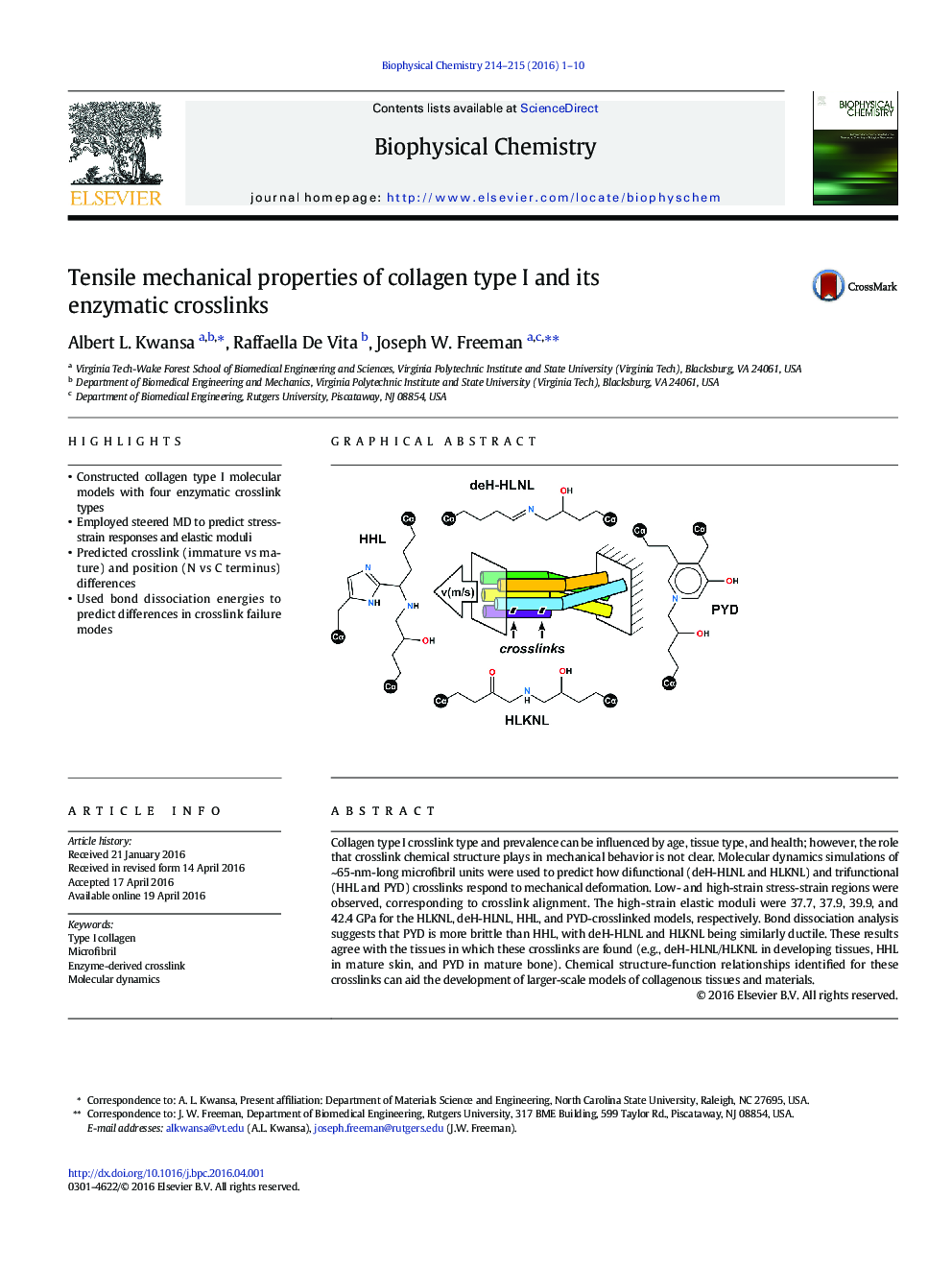| کد مقاله | کد نشریه | سال انتشار | مقاله انگلیسی | نسخه تمام متن |
|---|---|---|---|---|
| 5370735 | 1503905 | 2016 | 10 صفحه PDF | دانلود رایگان |

- Constructed collagen type I molecular models with four enzymatic crosslink types
- Employed steered MD to predict stress-strain responses and elastic moduli
- Predicted crosslink (immature vs mature) and position (N vs C terminus) differences
- Used bond dissociation energies to predict differences in crosslink failure modes
Collagen type I crosslink type and prevalence can be influenced by age, tissue type, and health; however, the role that crosslink chemical structure plays in mechanical behavior is not clear. Molecular dynamics simulations of ~65-nm-long microfibril units were used to predict how difunctional (deH-HLNL and HLKNL) and trifunctional (HHL and PYD) crosslinks respond to mechanical deformation. Low- and high-strain stress-strain regions were observed, corresponding to crosslink alignment. The high-strain elastic moduli were 37.7, 37.9, 39.9, and 42.4Â GPa for the HLKNL, deH-HLNL, HHL, and PYD-crosslinked models, respectively. Bond dissociation analysis suggests that PYD is more brittle than HHL, with deH-HLNL and HLKNL being similarly ductile. These results agree with the tissues in which these crosslinks are found (e.g., deH-HLNL/HLKNL in developing tissues, HHL in mature skin, and PYD in mature bone). Chemical structure-function relationships identified for these crosslinks can aid the development of larger-scale models of collagenous tissues and materials.
Journal: Biophysical Chemistry - Volumes 214â215, JulyâAugust 2016, Pages 1-10